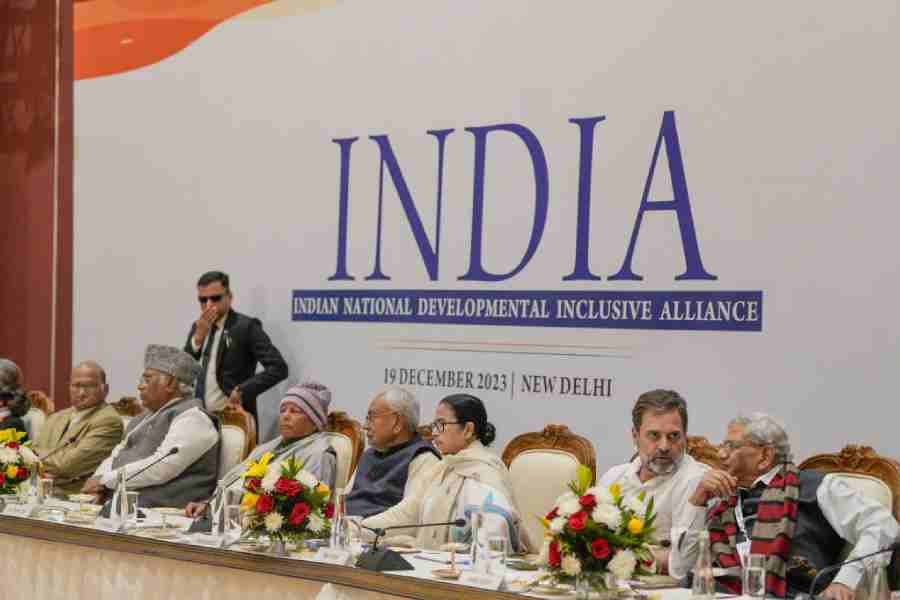India has already been witnessing above-average temperatures this winter season, with its hottest February in well over a century and the India Meteorological Department (IMD) forecasting an "enhanced probability" of heat waves between March and May.
Summer seems to come earlier every year in India, with the average daytime temperature as much as 3.4 degrees Celsius above the norm, while central India recorded its second warmest February with the average maximum temperature more than 2 degrees Celsius higher than normal.
"Above normal maximum temperatures are likely over most parts of northeast India, east and central India and some parts of northwest India from March to May," the IMD said in a statement.
Experts predict tougher times with an increased heat wave probability during the upcoming summer season. The main problem is the threat of crop damage.
The maximum temperature in some wheat-growing areas such as Rajasthan soared above 39 degrees Celsius (102 degrees Fahrenheit) earlier this month, nearly 7 C (12.6 F) above normal, according to IMD data.
Last year, for instance, India recorded its hottest March, which triggered an early onslaught of heat waves, engulfing several states across northern, central and eastern regions for two months. The country then reported 280 heat wave days between March 11 and May 18.
'A disaster in the making'
Experts are highlighting La Nina as a cause for the heat, which refers to the periodic cooling of ocean surface temperatures in the central and east-central equatorial Pacific that affects global weather patterns.
"The summer of 2023 is a disaster in the making that will feature an unprecedented heat wave due to a weak western disturbance and the prevailing La Nina condition," Abinash Mohanty, sector head of climate change and sustainability at IPE-Global, an international development organization, told DW.
Mohanty pointed out that climatological and meteorological conditions coupled with unsustainable anthropocentric activities are causing harsher heat waves that will severely affect food chains.
Earlier this week, the Intergovernmental Panel on Climate Change (IPCC) launched its synthesis report on the climate crisis, saying that despite progress in policies and legislation around climate mitigation since the previous such report in 2014, it is "likely that warming will exceed 1.5 C during the 21st century."
"This year has already witnessed anomalies in February, and an enhanced probability prediction by IMD suggests that the situation is going to be tougher in the coming months," said Mohanty.
Akshay Deoras, a meteorologist at the UK's National Centre for Atmospheric Science and the Department of Meteorology, said early heat waves do not necessarily mean more frequent and intense heat waves.
"While the official forecast suggests an enhanced probability of heat waves over central and northwestern parts of India during March to May, some models disagree," Deoras told DW.
Extreme weather events becoming the norm
"Given models have a varying prediction skill, we cannot be sure right now about the enhanced probability of heat waves this season. It is important to remember that the frequency, intensity, and duration of potential individual heat waves in a season cannot be predicted," added Deoras.
Scientists and meteorologists assert that changes in temperature and rainfall in India will add to the current water stress in the country. More importantly, premature rains could damage winter-sown crops — such as wheat, rapeseed and chickpeas — just before harvesting begins.
According to a study by the Indian Institute of Technology Gandhinagar (IIT), the frequency of severe heat waves in India will increase 30-fold by 2100. Under a business-as-usual scenario, heat wave frequency might increase 75-fold.
"If temperatures continue to rise and monsoon rainfall patterns continue to change, the country could see a GDP loss of 2.8%, depressing the living standards of nearly half its population by 2050," according to a World Bank report in 2018.
Sounding a dire warning, the report said almost half of South Asia's population, including India, now lives in vulnerable areas and will suffer from declining living standards that could be attributed to falling agricultural yields, lower labor productivity or related health impacts.
Based in New Delhi, the Centre for Science and Environment (CSE), a public interest research and advocacy non-profit organization, said that localized climate disasters — on 241 of 273 days until October last year — had claimed at least 2,755 lives, while affecting some 1.8 million hectares of crop area, killing more than 69,000 livestock and destroying 416,667 houses.
"Feeding and powering a heat-stressed India calls for impact-based heat-wave early warning, promoting ways and means to restore the fissured landscapes through nature-based solutions. This can make agri-food systems heat stress ready, followed by a fast-tracked renewable energy deployment across the heat-wave hotspots," stressed Mohanty from IPE-Global.
Heat waves are termed the "silent disaster" as heat-related deaths are often undercounted around the world, according to the World Weather Attribution Network.
Judging by recent years, it is increasingly clear that India is among the most vulnerable countries when it comes to climate change. Experts argue that the country's early warning system needs to become more robust.











